
Supercharge your lead generation with a FREE Google Ads audit - no strings attached! See how you can generate more and higher quality leads
Get My Free Google Ads AuditFree consultation

No commitment
Supercharge your lead generation with a FREE Google Ads audit - no strings attached! See how you can generate more and higher quality leads
Get My Free Google Ads AuditFree consultation

No commitment
In today's complex marketing landscape, effective B2B marketing for construction equipment requires a strategic mix of both online and offline channels working in concert. Online channels like social media build digital brand awareness, email marketing nurtures ongoing relationships, and SEO drives organic visibility. Meanwhile, offline channels such as trade shows generate face-to-face connections, direct mail creates tangible touchpoints, and industry publications establish thought leadership. Within this integrated ecosystem, Google Ads plays a critical middle-funnel role by capturing high-intent prospects at the exact moment they're searching for solutions—effectively bridging the gap between broader awareness efforts and your sales process. For construction equipment businesses, Google Ads represents a powerful opportunity to bridge online and offline marketing efforts: Intercept decision-makers at their precise moment of need, whether they're following up after a trade show or responding to a direct mail piece. Target with precision based on technical specifications and specialized terminology unique to your industry. Measure ROI completely by tracking from click to quote to closed deal, connecting digital touchpoints with offline sales. Complement other channels through remarketing to trade publication readers, event attendees, and digital audiences alike.

Construction equipment providers operate in a high-value, research-driven market where qualified lead generation directly impacts revenue growth. Leveraging Google Ads for construction companies delivers unmatched access to decision-makers actively searching for machinery, rentals, and services, but true performance hinges on a sophisticated, data-driven approach tailored to the unique buying process of this sector.
This playbook equips B2B marketers, dealerships, and service operators with an end-to-end framework for activating Google Ads within a results-oriented, multi-channel marketing strategy. It covers every critical dimension: from advanced keyword targeting built for construction-specific purchase intent, to landing page and creative alignment that matches the urgency and technical detail B2B buyers demand, to performance optimization that narrows wasted spend and accelerates ROI. Modern digital buyers often research equipment and services extensively but rarely convert on a first visit. Identifying these anonymous visitors, segmenting them by in-market intent, and syncing enriched profiles into your ad and CRM workflows allows teams to maximize every marketing dollar and ensure engagement with real purchase influencers rather than tire-kickers.
In a market where every qualified lead can represent tens or hundreds of thousands in revenue, the ability to unify data, identify high-intent buyers, and deliver relevant messaging across platforms is a core competitive advantage. Get started for free with Sona.
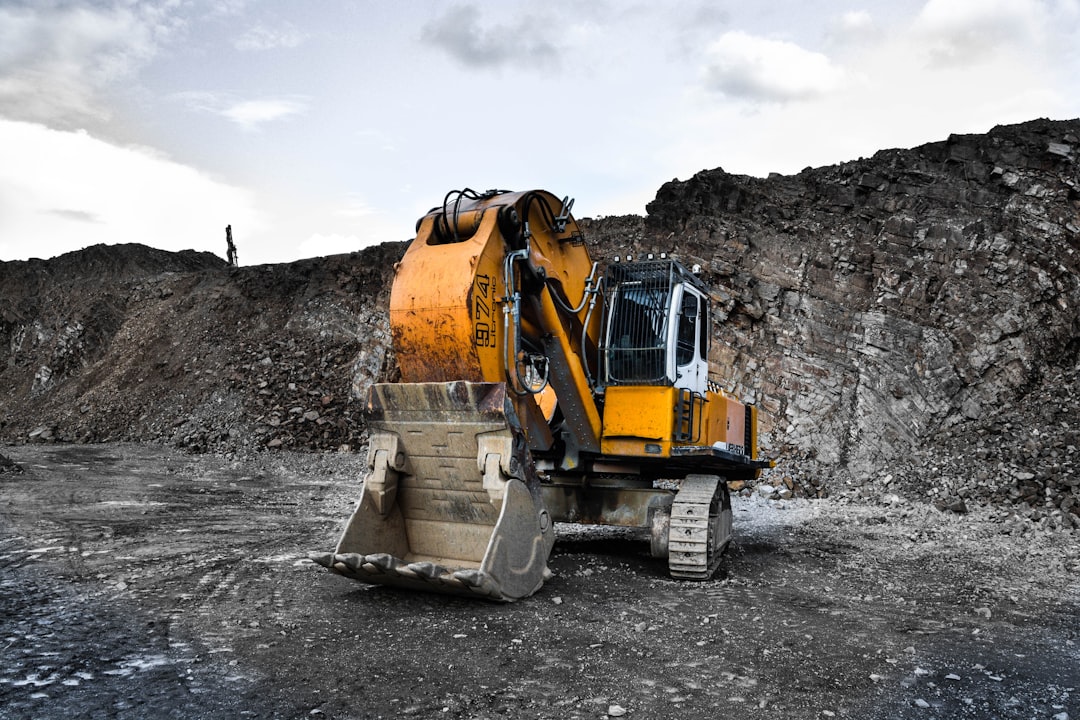
Precision matters when marketing to the construction equipment sector. Decision-makers like plant managers and procurement heads search for solutions with highly specific requirements, and digital campaigns must capture these moments with accuracy. By leveraging account-level data, marketers can identify not just anonymous website traffic but the actual companies and roles researching their services, making budget allocation and follow-up more targeted.
Construction equipment campaigns often target high-margin projects such as new installs, major retrofits, or emergency repairs. Google Ads enables brands to surface their offers to prospects showing in-market intent. Marketers who integrate real-time visitor intent signals can dynamically shift budget toward high-value accounts, ensuring outreach aligns with current needs and maximizing the impact of every dollar spent.
Demand in construction fluctuates rapidly with project cycles, emergencies, and seasonal needs. Google Ads provides immediate visibility when buying intent spikes, such as during equipment outages or infrastructure booms in emerging regions. When campaign data is unified with CRM and sales workflows, every ad can reflect the latest stage of the buyer journey, resulting in tailored messaging that increases conversion rates and shortens sales cycles.
Targeting new geographies or underserved markets is critical for growth in construction equipment. With advanced audience segmentation, marketers can pinpoint fast-growing metros or regions with unmet demand, ensuring resources are focused on areas with the highest upside. Automated audience updates allow campaigns to adapt as buyers move through the funnel, transforming market coverage from static to dynamic.
Closed-loop measurement is essential for justifying and optimizing advertising spend in this capital-intensive sector. By tracking conversions from click to contract—including both online and offline events—revenue teams gain a clear picture of what drives ROI. Integrating enriched lead and account data into Google Ads and downstream platforms ensures that every interaction is attributed, empowering marketers to refine strategies and maximize returns across all channels. If you want to see how these strategies can work for your team, get started for free with Sona.
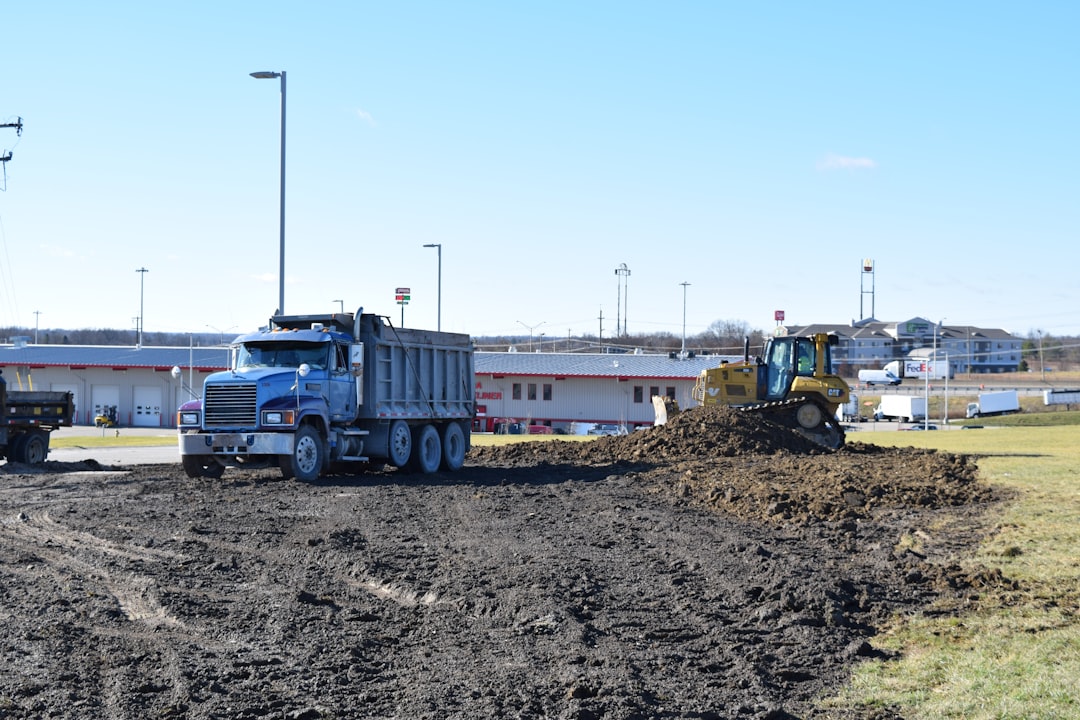
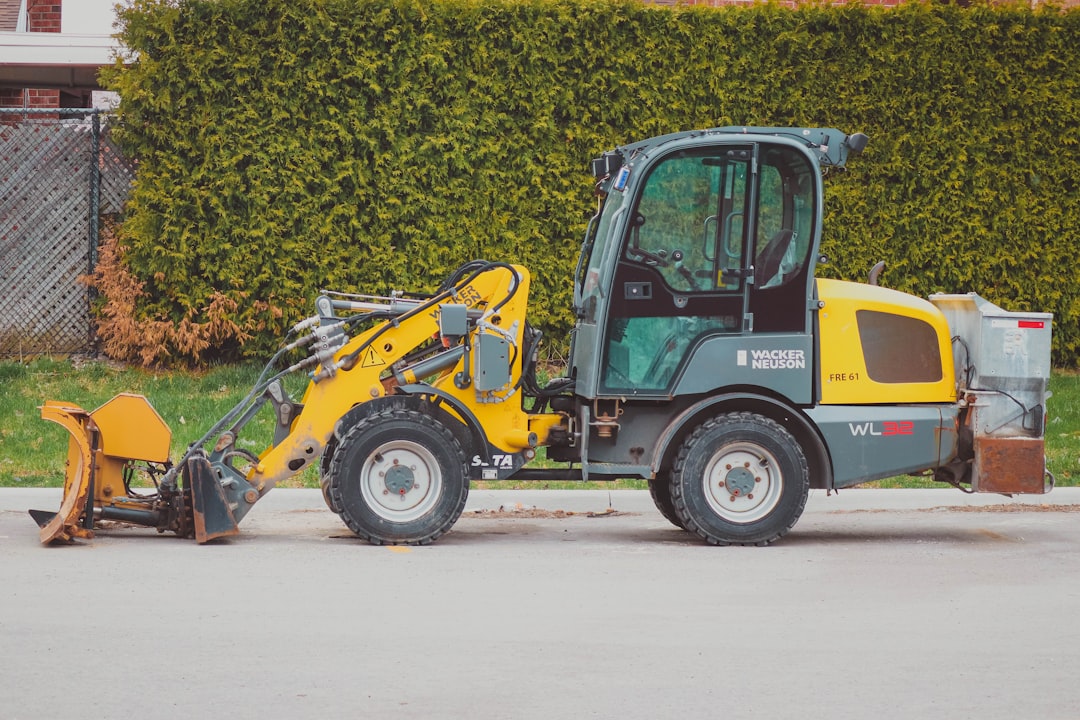
Reaching beyond traditional channels is critical for construction equipment marketers seeking to fuel consistent growth. Expanding into untapped verticals, targeting specialized buyer intent, and leveraging industry-specific ecosystems allow B2B teams to surface high-value opportunities that standard campaigns miss. To learn more about digital marketing strategies for heavy equipment companies, review these PPC strategies tailored for heavy equipment. For additional insights on advanced demand generation, explore our marketing analytics blog.
Ready to turn your anonymous website traffic into actionable leads? Get started for free with Sona.
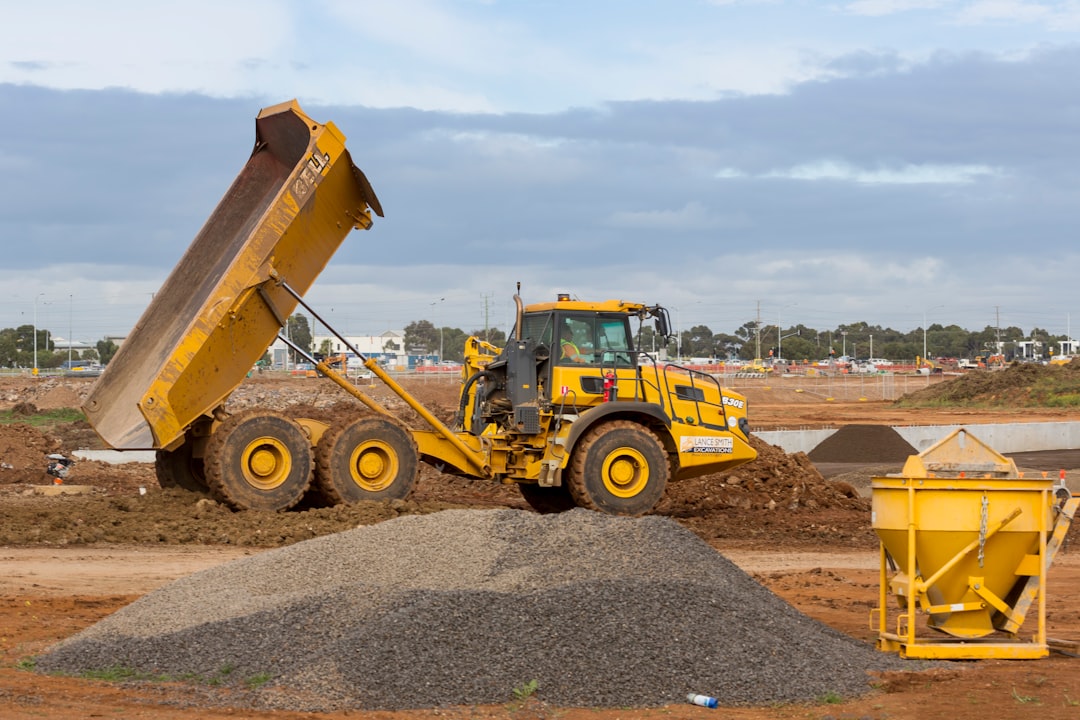
Precise audience segmentation empowers construction equipment marketers to reach key buyer groups with messaging that matches their unique needs and purchase timelines. This approach ensures every dollar spent on Google Ads for construction equipment is invested in the highest-probability leads, eliminating wasted impressions and maximizing campaign ROI. For more on segmenting and measuring your marketing efforts, explore best practices for construction equipment digital marketing or visit our marketing analytics blog.
To unlock more value from your segmentation efforts, get started for free with Sona and see how precise audience intelligence can transform your construction equipment marketing.
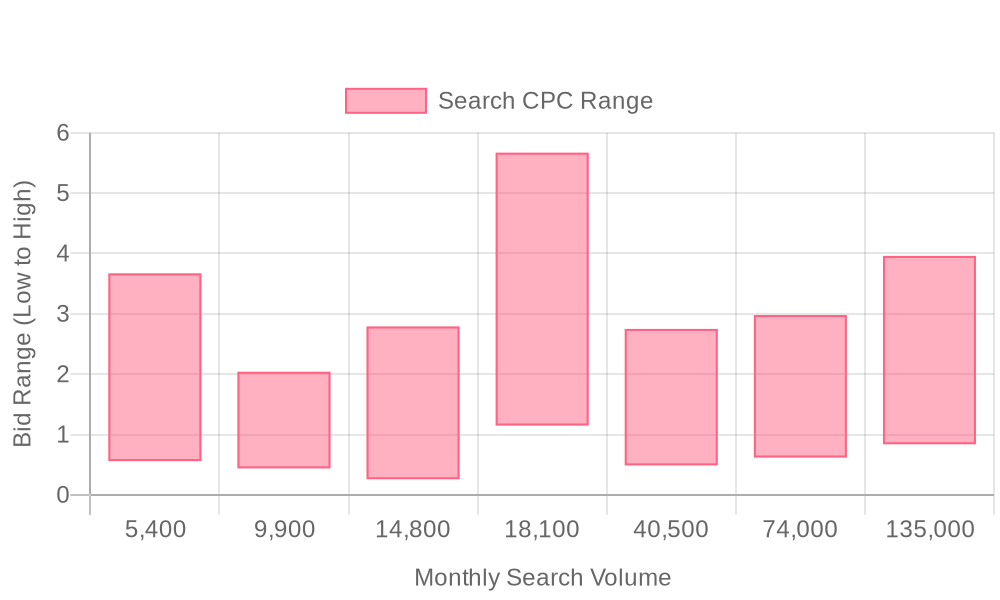
| Industry | Keyword | Monthly Search Volume | Competition Level | Low Bid | High Bid |
| Construction Equipment | sany excavator | 5400 | HIGH | 0.56 | 3.67 |
| Construction Equipment | backhoe for sale | 9900 | HIGH | 0.44 | 2.04 |
| Construction Equipment | excavator for sale | 14800 | HIGH | 0.26 | 2.79 |
| Construction Equipment | construction equipment | 18100 | MEDIUM | 1.15 | 5.67 |
| Construction Equipment | mini excavators for sale | 40500 | HIGH | 0.49 | 2.75 |
| Construction Equipment | backhoe | 74000 | MEDIUM | 0.62 | 2.98 |
| Construction Equipment | excavator | 135000 | MEDIUM | 0.84 | 3.96 |
A focused keyword strategy is essential for construction equipment companies leveraging Google Ads to generate qualified leads and maximize return on ad spend. Effective campaigns begin by mapping keywords to real buyer intent, ensuring every click represents a potential customer actively searching for heavy machinery, rentals, or related services. Selecting high-intent, high-volume terms such as "buy used excavators," "construction equipment rental near me," or "heavy equipment financing" allows marketers to intercept decision-makers at the right moment in their research and procurement journey. For more digital marketing tactics tailored to construction and heavy equipment businesses, review these advertising strategies.
To optimize Google Ads for construction equipment, marketers should structure their accounts around core service lines, buyer stages, and geographic targeting. This approach aligns campaign groups with how buyers actually search for and evaluate equipment, from initial brand discovery to final purchase or rental. Prioritizing transactional and location-based keywords increases the likelihood of capturing leads ready to engage, while negative keywords (such as "DIY," "salary," or "job openings") filter out irrelevant searches and protect budget efficiency. Explore additional insights on structuring campaigns for B2B.
Precision targeting goes beyond basic keyword selection. By layering intent signals, marketers can dynamically update target audiences as prospects move through the funnel, retargeting visitors who have shown interest but not yet inquired. Integration with Sona uncovers which companies are researching specific equipment, enabling sales teams to prioritize outreach and shift budget toward high-converting accounts. When enriched CRM and web data are synced with Google Ads, campaigns can seamlessly capture both online and offline conversions—allowing revenue teams to attribute closed deals to specific keywords and optimize spend for measurable ROI. For a more efficient way to convert your ad traffic, get started for free with Sona.
Effective Google Ads for construction equipment start with precise keyword targeting. Segmenting by service type, such as equipment sales, leasing, or parts, ensures relevance and increases campaign efficiency. Regional nuances are critical: using city and neighborhood modifiers, as well as "near me" variations, helps capture local demand from contractors and project managers searching for immediate solutions. For a comprehensive overview of PPC strategies tailored to this sector, see PPC for heavy equipment companies.
Incorporating long-tail keywords and question-based queries allows you to reach decision-makers at different points in their buying journey. Filtering out irrelevant terms with negative keyword lists prevents wasted spend, ensuring every click is from a high-value prospect. When keyword planning is aligned with your content marketing strategy, messaging across search, social, and email channels remains consistent and relevant, reinforcing brand authority. With advanced platforms, marketers can also pinpoint which companies are visiting your website, making it possible to adapt keyword targeting based on real-time audience insights and active buyer signals.
Ad copy for construction equipment should immediately address industry pain points and highlight proven value. Headlines that reference reliability, durability, or cost of ownership resonate well, especially when paired with urgency-driven incentives like free quotes or same-day service availability. Trust is paramount in B2B construction marketing, so incorporating certifications, industry awards, and customer ratings visibly reassures potential buyers. Explore how digital marketing drives results for construction equipment for additional inspiration.
Consistency across marketing channels is essential for building credibility and nurturing leads. When your ad messaging matches the tone and offers found in social or email campaigns, prospects experience a unified journey, which lifts engagement. Modern platforms provide the ability to dynamically update ad content and adjust offers based on shifting in-market behaviors, allowing you to highlight the right incentive to the right segment at the right moment. Integrating intent data lets you route budget toward ads that engage accounts showing genuine purchase readiness, further increasing Google Ads ROI for construction equipment dealers and manufacturers.
For construction equipment advertising, landing pages must deliver a seamless experience from keyword to ad to page content. Each landing page should reflect the specific service or equipment vertical promoted, such as cranes, bulldozers, or compact loaders, and answer the common questions your audience brings to the search. Interactive features like ROI calculators, trust badges, and detailed FAQs build confidence and address objections, while persistent, mobile-optimized calls to action keep the conversion path clear and accessible. For practical tactics, review this guide on digital marketing for construction equipment companies.
Connecting landing page forms directly to your CRM and marketing automation systems streamlines lead capture and follow-up. When enriched audience data flows automatically between Google Ads, CRM, and sales, teams can personalize outreach and accelerate the sales cycle. This level of integration supports dynamic audience updates: as leads progress through the funnel or engage with new content, campaigns can automatically retarget or suppress them, improving efficiency and ensuring that sales and marketing efforts remain tightly aligned.
PPC campaigns for contractors and equipment suppliers thrive on continual optimization. Tracking both micro-conversions (like downloads or video views) and macro-conversions (such as quote requests or demo bookings) reveals which touchpoints drive the most value. Automated bidding strategies, including Target CPA and Max Conversions, help maximize budget efficiency and adapt to real-time market shifts. For a deeper dive into optimizing Google Ads for construction, check out Google Ads for construction companies.
Testing is fundamental: experiment with ad headlines, CTA placements, and landing page layouts to discover what best engages your target audience. Data from Google Ads can be leveraged to inform content strategies on other channels, ensuring that high-performing messages are amplified throughout your marketing ecosystem. Advanced tracking platforms enable attribution of both online and offline conversions, providing a complete picture of true ROI from your Google Ads spend. By syncing enriched leads and activity data back into Google Ads and CRM systems, you gain a closed feedback loop that continuously improves targeting, personalization, and campaign performance across the entire construction equipment online marketing funnel.
Cross-promotion of educational content within your retargeting campaigns helps construction equipment brands reinforce expertise and trust throughout the buyer’s journey. Nurturing audiences with valuable guides, maintenance tips, or ROI calculators elevates your brand beyond transactional messaging and supports long-term goals—explore digital marketing best practices for construction equipment to further your strategy.
Segmenting audiences by service history or purchase behavior, using CRM data, allows you to upsell related services to the right decision-makers at the right time. Marketers who sync CRM segments with Google Ads can activate campaigns based on real-world customer milestones, such as service renewals or end-of-lease periods, ensuring offers reach buyers when they are most likely to engage. With Sona’s Destinations feature, new leads and enriched profiles flow seamlessly into your Google Ads targeting, enabling automated updates to dynamic audiences as buyers move through your funnel.
Partnering with industry associations unlocks valuable referral traffic and co-branded advertising opportunities. These partnerships not only drive high-quality leads but also signal credibility and relevance in construction equipment advertising. For more on campaign optimization, review PPC strategies for heavy equipment companies.
Incorporating search query data into your broader marketing strategy reveals new content topics and product trends that resonate with your audience. By analyzing which queries drive conversions, your team can prioritize content development that supports both paid and organic efforts, optimizing for construction equipment online marketing and nurturing future demand. Leverage intent signals to connect search behavior across platforms and gain a unified view that powers real-time budget decisions.
Effective Google Ads for construction equipment depends on smart keyword targeting, granular audience segmentation, and creative designed for conversion. Real-time optimization rooted in reliable, multi-channel conversion data ensures ongoing ROI improvements. Drive sustained growth by integrating online and offline marketing, leveraging unified data and automation to deliver personalized engagement that drives measurable business outcomes. To see results for yourself, get started for free with Sona.
In today's competitive landscape, effectively leveraging Google Ads for promoting construction equipment can be a game-changer. By integrating smart strategies and best practices, you can significantly enhance your visibility and reach the right audience, ultimately driving higher ROI for your business. The journey to mastering Google Ads may seem daunting, but with the right approach, it becomes an invaluable asset in your marketing toolkit.
Throughout the article, we've explored the intricacies of setting up and optimizing Google Ads campaigns tailored specifically for the construction equipment industry. From identifying target keywords to crafting compelling ad copy and utilizing advanced targeting options, these strategies are designed to overcome common challenges and maximize the impact of your advertising efforts.
Imagine the possibilities when your campaigns are fine-tuned to connect with the exact audience in need of your products. By embracing these insights and taking decisive action, you unlock the potential for increased leads, conversions, and growth in your business. The transformation from confusion to clarity in your advertising strategy is within reach.
To experience the full capabilities of unifying go-to-market data and driving actionable insights, start for free and see how our platform can elevate your Google Ads performance.
Best practices include using precise keyword targeting, integrating Google Ads with both online and offline marketing channels, and leveraging advanced audience segmentation.
A successful campaign requires a data-driven approach, using advanced keyword targeting, aligning landing pages with ad creatives, and optimizing performance through real-time analytics.
Budget allocation should be dynamic, driven by real-time visitor intent signals, and focused on high-value accounts to ensure the highest ROI.
Focus on high-intent keywords like 'buy used excavators,' 'construction equipment rental near me,' and 'heavy equipment financing,' tailored to capture decision-makers actively searching.
Effective ad types include search campaigns for high-intent buyers, display ads for brand presence, video ads for demonstrating features, and remarketing to reconnect with previous site visitors.
Join results-focused teams combining Sona Platform automation with advanced Google Ads strategies to scale lead generation

Connect your existing CRM

Free Account Enrichment

No setup fees
No commitment required

Free consultation

Get a custom Google Ads roadmap for your business
Join results-focused teams using Sona Platform automation to activate unified sales and marketing data, maximize ROI on marketing investments, and drive measurable growth

Connect your existing CRM

Free Account Enrichment

No setup fees
No commitment required

Free consultation

Get a custom Google Ads roadmap for your business
Over 500+ auto detailing businesses trust our platform to grow their revenue
Join results-focused teams using Sona Platform automation to activate unified sales and marketing data, maximize ROI on marketing investments, and drive measurable growth

Connect your existing CRM

Free Account Enrichment

No setup fees
No commitment required

Free consultation

Get a custom Google Ads roadmap for your business
Over 500+ auto detailing businesses trust our platform to grow their revenue
Join results-focused teams using Sona Platform automation to activate unified sales and marketing data, maximize ROI on marketing investments, and drive measurable growth

Connect your existing CRM

Free Account Enrichment

No setup fees
No commitment required

Free consultation

Get a custom Google Ads roadmap for your business
Over 500+ auto detailing businesses trust our platform to grow their revenue
Join results-focused teams using Sona Platform automation to activate unified sales and marketing data, maximize ROI on marketing investments, and drive measurable growth

Connect your existing CRM

Free Account Enrichment

No setup fees
No commitment required

Free consultation

Get a custom Google Ads roadmap for your business
Over 500+ auto detailing businesses trust our platform to grow their revenue
Our team of experts can implement your Google Ads campaigns, then show you how Sona helps you manage exceptional campaign performance and sales.
Schedule your FREE 15-minute strategy sessionOur team of experts can help improve your demand generation strategy, and can show you how advanced attribution and data activation can help you realize more opportunities and improve sales performance.
Schedule your FREE 30-minute strategy sessionOur team of experts can help improve your demand generation strategy, and can show you how advanced attribution and data activation can help you realize more opportunities and improve sales performance.
Schedule your FREE 30-minute strategy sessionOur team of experts can help improve your demand generation strategy, and can show you how advanced attribution and data activation can help you realize more opportunities and improve sales performance.
Schedule your FREE 30-minute strategy sessionOur team of experts can help improve your demand generation strategy, and can show you how advanced attribution and data activation can help you realize more opportunities and improve sales performance.
Schedule your FREE 30-minute strategy session





Launch campaigns that generate qualified leads in 30 days or less.
